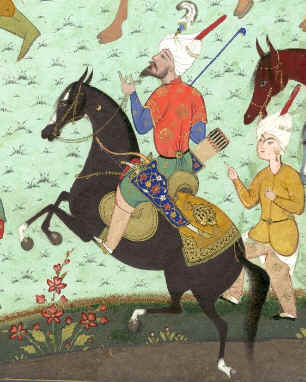All too often in our practice we find moments where we become aware of difficulties and resistance. We honestly feel the horse working against our will but the horse has no way to know that will. What in truth we feel is not in the horse but the reflection of our own aggressions. In essence we are attacked by our own aggression.
Resistance needs a resistor and a “resistee” (if such a term exists. The idea is that every resistance is transmitted and received). Our own issues are reflected back on us through the horse.
That does not particularly presents an obstacle to creating the start of a positive relationship with the horse. Relationships are not without their problems and in the relationship we have with the horse, what is most important is that we start to see what we do as a means to grow into a greater closeness with each other.
What is needed is to cultivate an approach which lights up the path before us. So it is that we need to begin to find a way to develop kindness toward ourselves and then to develop kindness toward the horse.
This sounds very simple-minded, and it is, but at the same time, it is very difficult to practice. This is superior dressage but it is not a strategy of door mat passivity. It is a dressage of an active and intelligent loving presence.
The understanding of the meaning of these words is the whole point of equestrian instruction. Coming to terms with our own aggressions and finding clear vision is the path which brings the greatest rewards when we can find the proper view and it is this greater view which permits us to always find those actions which are proper.
The solution to all training problems is simple; loving kindness is always the way.There is no resistance which can stand when loving kindness is applied.
The field of all training is the projection of the mind and so good dressage is always a matter of mind over matter. This path start with your own mind taking a proper relationship with your own body.
To think that there is any good dressage in which one does not link authentically with your own form/body is a very problematic situation. Those people whom we term “talented” are gifted with such a connection and for those of us more mortal must seek ways to forge such a connection.Frankly, most of us live far too much in our own head and neglect our feeling nature. This problem is not just individual but also a cultural heritage. We would rather ignore our part and blame the horse that attend to connecting with our own self.
Good dressage is alway found in the textures in experience with the horse. The relationship we find with the horse, when healthy and vibrant, always expresses an abundance of kindness and lightness. Feeling is what defines the relationship and extends itself both to and from our own actions and those of the horse.
We take the horse and the horse takes us to the play ground of experiences and we progress together, cultivating a precise language which is free of words. The aids are the core and are the transparent dance in space of a well-trained/connected mind.
Good dressage, simple and profound, is the skillful means of our love expressed to the horse. Practice, if it is to be of any value, is to bring awareness into our experience and in this, we must learn to read the messages that the horse gives us.
The fact that these messages appear in the form of resistances does not mean that we should use speed, aggression, or misdirected passion to ignore or over power training problems. The only permanent solution to training problems is to find the goodness in dressage which is always in a practical expression of loving kindness.


Recent Comments